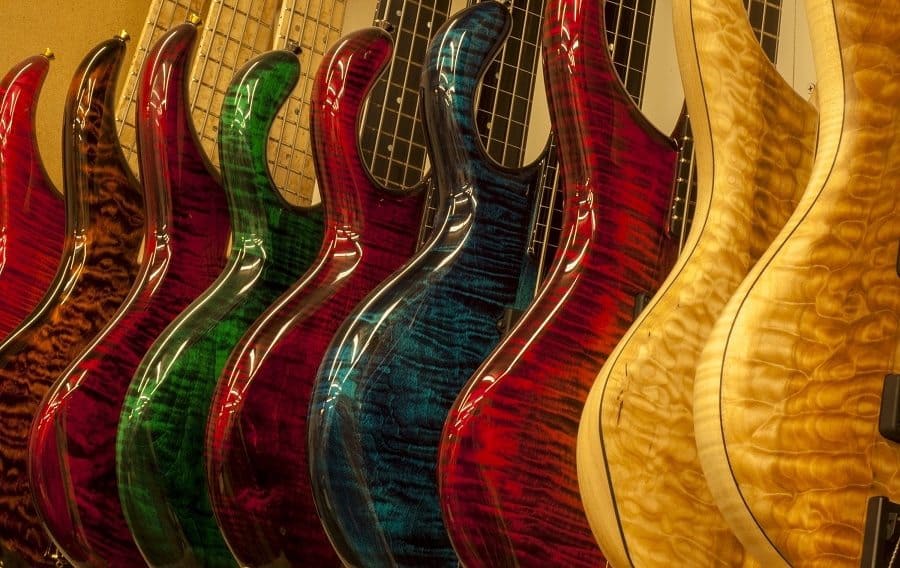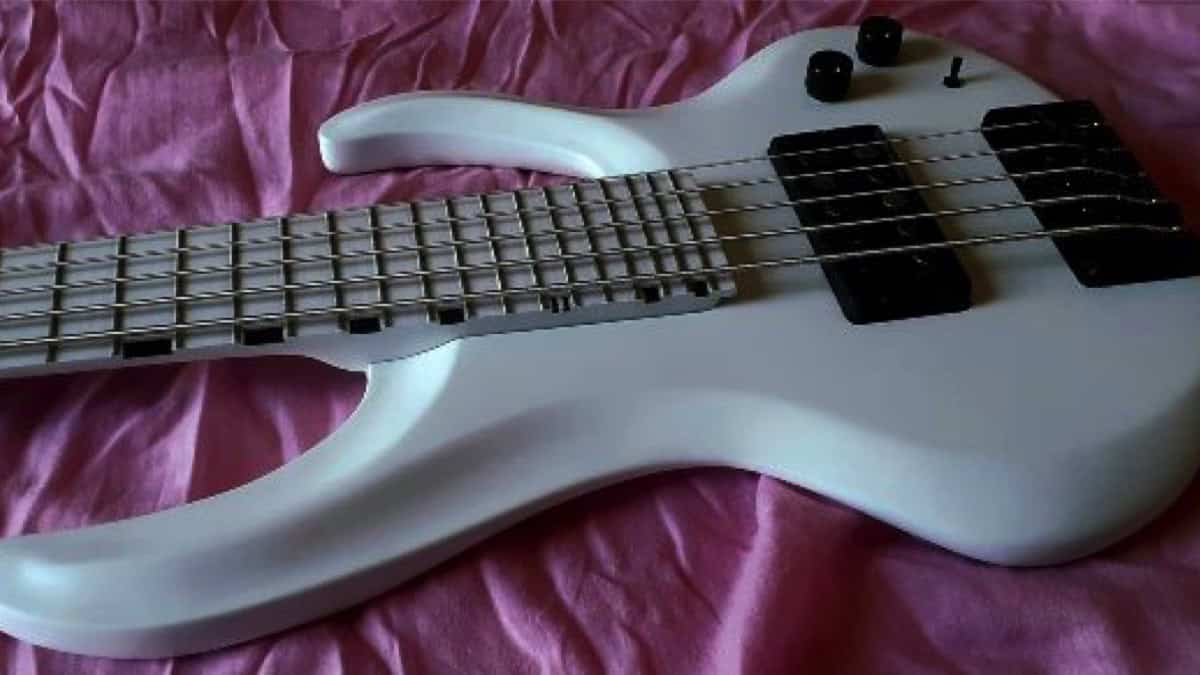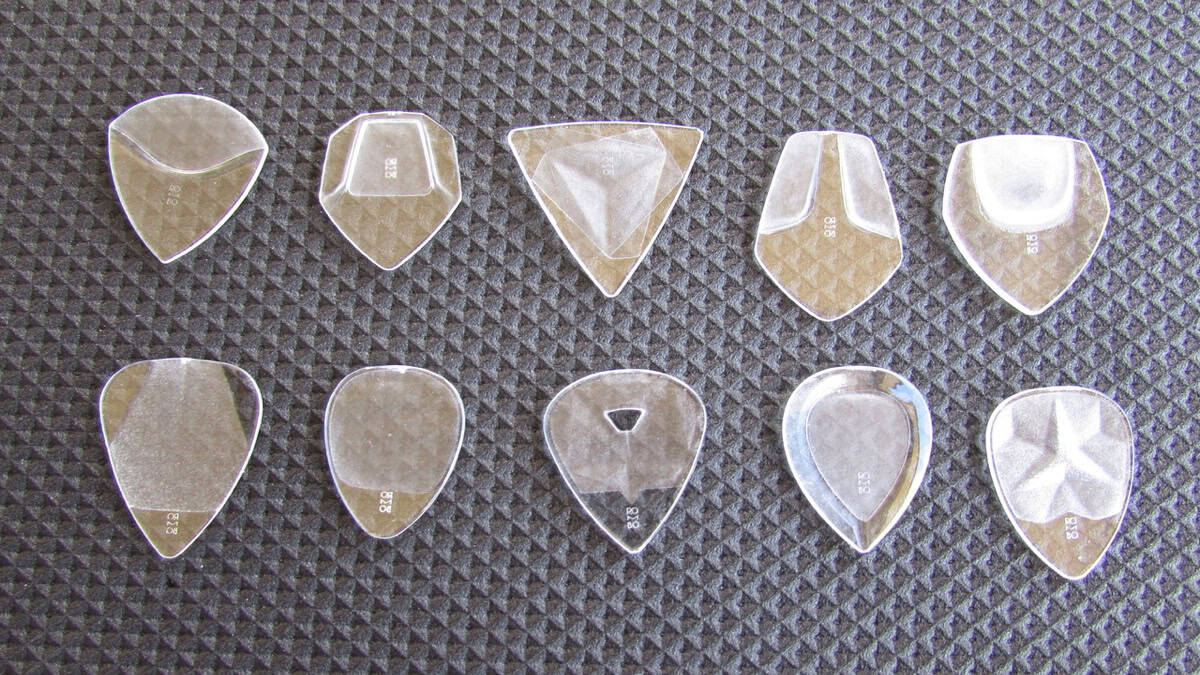Latest
Bass Musician Magazine’s Year of the Luthier – Michael Pedulla


How did you get your start in music?
I inherited a violin when I was about 13 and that got me started. I attended a music college and violin was my major instrument, so I have a classical background. I did not pick up a guitar until I was in college.
Are you still an active player?
I no longer seem to have the time it takes to maintain any serious level.
How did you get started as a Luthier?
I first began while in college, we had an open end assignment in one of my ethnic music classes, I chose to build an Ud. I had picked up playing some banjo as well as guitar and the Ud was so much fun to make that I made myself a banjo next, then a dulcimer while still in school. Had a blast.
When did you build your first bass?
I began building instruments professionally in 1975 and my first bass was made in 1976.
How did you learn the art of woodworking/Luthier?
I always loved making things, somehow wood was always the attraction. I began helping my Dad with some projects when I was five. Although he was not a professional woodworker, he taught me many basic skills and, most importantly, to do it right or not at all (he was an Air Force pilot). I did not get in to working with instruments until much later. I learned design form doing repair work and the woodworking skills came with experience and always trying new things. I always had a love for engineering, physics, music and wood, so I put them all together and went after it. I did have formal training in classical music and violin but I never did have have any formal training in woodworking, I learned on my own.
Who would you consider a Mentor?
There is no single mentor, I had none in my profession. The tools I had to put the bass thing together came from my folks and inspiration from a vast array of people that chose to do something in their life with purpose, regardless of their profession. I did catch some breaks, I did have some help, no one accomplishes much without either. And I accepted failures, learned from them, and went back to it.
 How do you select the woods you choose to build with?
How do you select the woods you choose to build with?
At first it was all trial and error, the only way I could ever tell what would work and what wouldn’t was to try it. Currently, I choose my woods from what I’ve learned by building basses over the past four decades . They are different for each of the bass models I make now. They are chosen primarily for sound and looks. Within each type of wood there are many different factors: flat sawn, quartersawn, difference in density, color, figure etc. Unlike other materials, every piece of wood is different and must be treated as such.
How about pickups? What pickups did you use in the past? What electronics do you use right now?
My first electric guitars and basses had DiMarzio pickups, back in 1976. By chance I went to my first NAMM show in Chicago in 1978 and my booth was adjacent to “High A” pickups, Bartolini. Pat and Bill Bartolini showed me the ropes of doing a NAMM show, they gave me a few sets of pickups to try, and I have been using Bartolini ever since. Over the years, Bill designed our proprietary pickups and electronics, tweaking them to the sound I wanted for each new model. I use them exclusively, they are part of what provides the sound of each Pedulla bass.

Who were some of the first well-known musicians who started playing your basses?
I worked with a number of great bassists during the mid to late 1970’s. Mark Egan and Tim Landers were the first, and both still play Pedulla basses. Mark was playing with Pat Matheny, Tim was with Al DiMeola. There were new demands being made in the role of the bass, and they were each looking for a new tool to meet those demands. We became good friends and have worked together to this day.
How do you develop a signature or custom bass for an artist?
I don’t do custom basses. The problem with “custom” basses is that some people’s ideas of what they want just won’t work as well as they think. I’ve spent a lifetime putting together basses in various combinations of woods, electronics, designs, hardware, and I pretty much know what won’t work well together. It’s so much more than the components, it’s all about how you combine them. Like the million things that go in to an ecosystem that allows it to work, take a seemingly insignificant part out of it and it dies. Perhaps not on the same scale, but that is how it works for me. The only “Signature” bass I have done is the Mark Egan Signature, most recently a 40th Anniversary Edition.

What are a few things that you are proud about your instruments and that you would consider unique in your instruments?
I consider the whole, and they are unique. The appearance and feel are unique and the sounds are signature and always will work because it is the heart of working bass. I build only my own bass designs.
Which one of the basses that you build is your favorite one?
They all are.
Can you give us a word of advice to young Luthiers who are just starting out?
It’s harder than it may seem and in addition to being able to build truly useful and quality instruments, you’ll also need to know how to run a business and deal with the unexpected if you’re looking to make a living at it.
What advice would you give a young musician trying to find his perfect bass?
Don’t pay attention to the “flavor of the month” or the latest “fad” and don’t judge an instrument on looks alone. The only way to find the right bass for you is to try them. You may want to pay attention to what works for other bassists but not necessarily who endorses what because some companies give away instruments or pay for endorsements; The endorser may not have actually liked the bass enough to pay for it. We’ve never paid anyone to play a Pedulla bass and don’t give away basses… Pedulla Artists have all wanted their Pedulla basses enough to pay for them.
What is biggest success for you and for your company?
Working on year 41 and the basses are better than ever!
Are you preparing something new, some new model or new design? Or maybe some new gear amps, etc.
Yes. I am always working on something new, sometimes it takes years to go from thought to execution because I’m so busy filling bass orders, but it’s always there. I’m also constantly improving on current models in subtle ways, like improved electronics and more lustrous finishes.
What are your future plans?
I’m in my 60s and have been doing this full-time (often more than full time) for 41 years. Although I still love what I do, I may consider “semi-retirement” soon. Owning your own business is really a 24/7 job and I’d like to make more time for other things I enjoy doing. My schedule has been booked at least 3 months out with bass orders and if I “semi-retire”, that wait time for new basses may become longer.

Is there anything else you would like to share that we have not included?
I’d like to thank all of our customers, especially those who have been avid supporters and have provided great reviews, comments, social media posts, etc. All of those Pedulla bass (& Pedulla Bass Strings) buyers and supporters that have spread the word about the quality of our products and our dedication to what we do have contributed greatly to our longevity. We appreciate them very much – and appreciate you providing this opportunity to thank them!
Visit online:
www.facebook.com/PedullaBassGuitars
Gear News
New Gear: Alberto Rigoni Signature Bass, the VPR5 by Gaetano Costanzo!

Alberto Rigoni Signature Bass, the VPR5 by Gaetano Costanzo!
Internationally renowned bassist ALBERTO RIGONI (soloist, BAD AS, Vivaldi Metal Project, TwinSpirits, etc.) is proud to announce the release of his signature bass VPR5 made by renowned Italian luthier Gaetano Costanzo!
The bass is entirely handmade in Italy, without the use of CNC or other machinery, and has rather special features. The VPR is a 5-string bass (but also available as a 4-string) with 30 frets, Seymour Duncan pickups, Music Man Alnico style, passive electronics (volume, tone and a switch to select series/parallel/single-coil mode), alder body, and American maple neck and fingerboard. Gotoh tuners that ensure perfect intonation. The bass is totally painted white (nitro finish) but other colors can be requested. The VPR has a weight of about 2.9 kg and suitable for any genre.
For more information contact Gaetanobass77@gmail.com or visit online at www.instagram.com/gaetanocostanzoluthier or www.facebook.com/GaetanoCostanzoLuthier
Bass Videos
Interview With Bassist Graham Stanush

Bassist Graham Stanush…
Return to Dust is keeping Grunge alive and well! They have a new self-titled album that went out on May 3rd, 2024 and will be super busy promoting this project in the near future.
Graham Stanush is the bass powerhouse driving their sound and adding vocals to the mix. Join me as we hear all about Graham’s musical journey, details about the new album, how he gets his sound and their plans for the future.
Featured Videos:
Visit Online:
linktr.ee/returntodust
instagram.com/returntodustband/
twitter.com/Returntodustbnd
youtube.com/@returntodustband
tiktok.com/@returntodustband
Bass Videos
Review: CrystalBright Rombo Picks

CrystalBright Rombo Picks
PR SamplePlaying bass with a pick is still a touchy subject in our community. I believe you should be able to use whatever you need to get your sound. Even though I mostly play with my fingers, I like to check out innovative new picks that might have something new to offer, sonically speaking.
Judith and Carlos from Rombo recently contacted me about a new material called CrystalBright that they have been researching for the last 12 months and offered to send some prototype picks. After trying them out, I put together this video with my findings.
For more info check out @rombopicks
Latest
This Week’s Top 10 Basses on Instagram

Check out our top 10 favorite basses on Instagram this week…
Click to follow Bass Musician on Instagram @bassmusicianmag
FEATURED @sireusaofficial @ricardosguitars @gullone.bajos @godin_guitars @sandbergguitars @adamovicbasses @bassbros.uk @baumguitars @harleybentonofficial @dingwallguitars
Gear
New Joe Dart Bass From Sterling By Music Man

Sterling by Music Man introduces the Joe Dart Artist Series Bass (“Joe Dart”), named after and designed in collaboration with the celebrated Vulfpeck bassist.
Above photo credit: JORDAN THIBEAUX
This highly-anticipated model marks the debut of the Dart bass in the Sterling by Music Man lineup, paying homage to the Ernie Ball Music Man original that all funk players know and love. The bass embodies many of the original model’s distinctive features, from its iconic minimalist design to the passive electronics.

The design process prioritized reliability, playability, and accessibility at the forefront. Constructed from the timeless Sterling body, the Dart features a slightly smaller neck profile, offering a clean tone within a comfortable package. The body is crafted from soft maple wood for clarity and warmth while the natural finish emphasizes the simple yet unique look.
Engineered for straightforward performance, this passive bass features a ceramic humbucking bridge pickup and a single ‘toaster’ knob for volume control. Reliable with a classic tone, it’s perfect for playing in the pocket. The Dart is strung with the all-new Ernie Ball Stainless Steel Flatwound Electric Bass Strings for the smoothest feel and a mellow sound.

The Sterling by Music Man Joe Dart Bass is a special “Timed Edition” release, exclusively available for order on the Sterling by Music Man website for just one month. Each bass is made to order, with the window closing on May 31st and shipping starting in November. A dedicated countdown timer will indicate the remaining time for purchase on the product page. Additionally, the back of the headstock will be marked with a “2024 Crop” stamp to commemorate the harvest year for this special, one-of-a-kind release.
The Joe Dart Bass is priced at $399.99 (MAP) and can be ordered globally at https://sterlingbymusicman.com/products/joe-dart.
To learn more about Joe Dart, visit the official Vulfpeck artist site here https://www.vulfpeck.com/.













